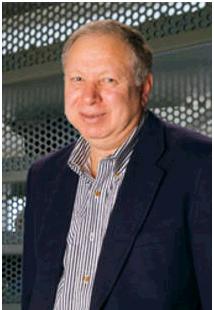 Biograph: Aly E. Fathy received his Ph.D. degree from the Polytechnic Institute of New York, Brooklyn NY (NYU Poly), in 1984. In February 1985, he joined the RCA Research Laboratory (currently the Sarnoff Corporation), Princeton, NJ, as a Member of the Technical Staff. In 2001, he became a Senior Member of the Technical Staff. In 2003, he joined UT, currently he is a distinguished Professor. He has authored or coauthored numerous transactions and conference papers. He holds 12 U.S. patents, and co-authored many book chapters on radars for medical applications. His current research interests include DBS Antennas, wireless reconfigurable antennas, see-through walls, UWB systems, and high-efficiency high-linearity combining of digital signals for base-station amplifiers. He has developed various UWB microwave radar systems such as non-contact vital signs detection using impulse radar, CW radar, SFCW radar, and collaborated extensively with many international scientists. He was the recipient of five Sarnoff Outstanding Achievement Awards (1988, 1994, 1995, 1997, 1999), Gonzalez family research excellence award (2005), two research excellence awards from the College of Engineering, University of Tennessee (2009, 2011), one teaching fellow award from the college of Engineering (2014) and Lamar Alexander Chancellor’s Excellence Award in teaching and research in 2011, he is a fellow of IEEE.
Biograph: Aly E. Fathy received his Ph.D. degree from the Polytechnic Institute of New York, Brooklyn NY (NYU Poly), in 1984. In February 1985, he joined the RCA Research Laboratory (currently the Sarnoff Corporation), Princeton, NJ, as a Member of the Technical Staff. In 2001, he became a Senior Member of the Technical Staff. In 2003, he joined UT, currently he is a distinguished Professor. He has authored or coauthored numerous transactions and conference papers. He holds 12 U.S. patents, and co-authored many book chapters on radars for medical applications. His current research interests include DBS Antennas, wireless reconfigurable antennas, see-through walls, UWB systems, and high-efficiency high-linearity combining of digital signals for base-station amplifiers. He has developed various UWB microwave radar systems such as non-contact vital signs detection using impulse radar, CW radar, SFCW radar, and collaborated extensively with many international scientists. He was the recipient of five Sarnoff Outstanding Achievement Awards (1988, 1994, 1995, 1997, 1999), Gonzalez family research excellence award (2005), two research excellence awards from the College of Engineering, University of Tennessee (2009, 2011), one teaching fellow award from the college of Engineering (2014) and Lamar Alexander Chancellor’s Excellence Award in teaching and research in 2011, he is a fellow of IEEE.
Title:Radars for Non-contact Vital Sign Detection and Human Gait Analysis
Abstract: Technology to detect vital signs and analyze human motion has significantly advanced in the last few years. Use of wearable devices for vital sign detection could be impractical in some scenarios like in case of baby’s sleep apnea monitoring and locating victims of earthquakes covered under debris. Meanwhile, locomotion studies have proved useful and have been practically applicable to some gait analysis. But its use still being hampered by the amount of data generated and the limitations to the interpretation capabilities of these massive data. New techniques need to be developed to capture data rapidly, accurately, efficiently and preferably remotely using non-invasive techniques. Our effort aims at improving the current state of the art by developing a non-invasive, cost effective system that can be installed both indoors (e.g. hospital rooms, elderly care centers, homes, etc.) and outdoors (e.g. sports facilities or events), and can be functional 24/7 without hindering the normal course of events for the human(s) being monitored, and without any loss of privacy as often encountered with camera based systems. In this talk I will give overview about the use of UWB radars in this application, and touch on relevant optical techniques as well.